GT1 - 1999
For Franco Sbarro, the GT1 presented in 1999 is the final chapter in a trilogy that includes the Ionos and Crisalys.

Class leader
Say GT1 to a motorsport enthusiast and the conversation will turn to the 24 Hours of Le Mans. Certain names will often come up, such as Porsche, Toyota, Nissan, Mercedes... The GT1 category offers a major advantage for any enthusiast of exceptional automobiles: to be eligible to race, a model must exist in at least one homologated version for road use. A "street-version", sometimes built as a single unit, like the Toyota GT One or the Nissan R390, more often in very small series, like the Porsche GT1 or the CLK-GTR, of which Mercedes built 25 units. Unfortunately, you'll never see one on the open road. At close to a million euros a copy, the rare owners don't use them very often (except for one emir who regularly drove his at over 250 km/h, at home, on the seaside... in the city!) In short, it's out of the question to find a cheap copy in the classified ads of your local newspaper! GT1s are automotive myths, on the racetrack and even more so on the road.
As a connoisseur, Franco Sbarro decided to call one of his most spectacular creations GT1. It's a tribute to Mercedes' victory in the 24 Hours of Le Mans, where the car was on display at the June 1999 edition. This tribute to the Mercedes CLK-GTR could only be made using original Mercedes components, even though the German brand has no direct connection with the Sbarro GT1. So Franco Sbarro and his Grandson students chose a 7.4-liter Mercedes V8, developing 450 hp at 5800 rpm and 50 mkg at 2800 rpm. Knowing that weight remains limited to 1350 kg, the tone is set!
A plaque has been placed on the engine to provide useful information for mechanics. It reads:"Warning to mechanical professionals. It is not a serial engine. It is a 1968 MercedesM100 engine N°52005480 prepared for competition by AMG. In 1999 the displacement was increased to 7.3 liters and the power to 600cv. The cylinder caps are modified and equipped with crossed camshafts. The gearbox 5 speeds is model ZF DS25 of competition of the Ford FT40 of 1968".
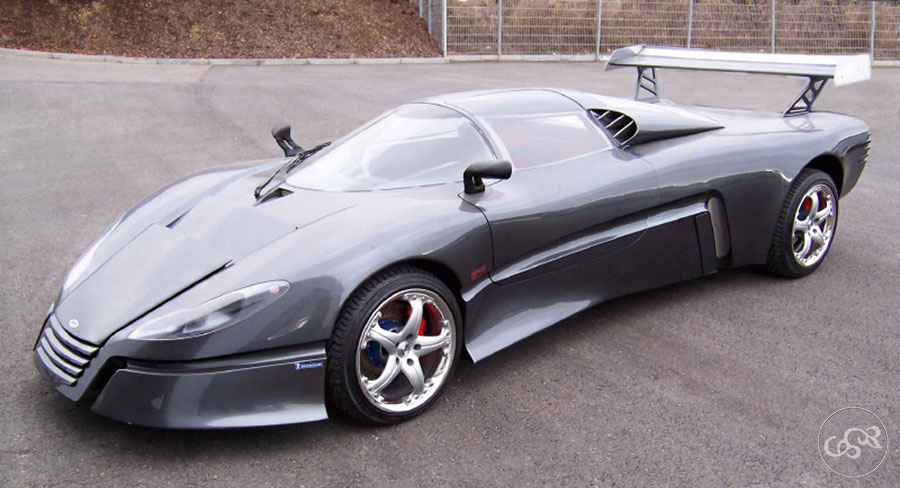
Dual Frame
The most interesting technical aspect of the GT1 is the dual-frame chassis patented by Sbarro in 1991. This system consists of three longitudinal beams combined with, and I quote, "a push lever inboard prolink system with spring-damper combinations". The dual-frame chassis is based on the idea that the engine block is a highly rigid element that can contribute to the rigidity of the chassis as a load-bearing element. A simple and ingenious idea! The shell, made of partitioned polystyrene, is then fixed to the chassis via three expanding foam silentblocks. The system ensures rigidity and limits vibrations.
Suspension is assured by Mercedes running gear and Antera wheels, 18" at the front and 19" at the rear, shod with Michelin 245-35 and 365-35. Brakes are ventilated 4-piston discs. The exhaust system is specific to the GT1 and was developed by Sbarro.The grille is designed to press the car to the ground while directing airflow to the brakes. At the base of the windshield is a small Naca intake. The rear, topped by a competition spoiler, is apparently based on taillights from a Mercedes S-Class (personal guess). The GT1's exterior styling, though highly individual, leaves no doubt as to its inspiration: the Sbarro exudes competition down to the smallest detail.
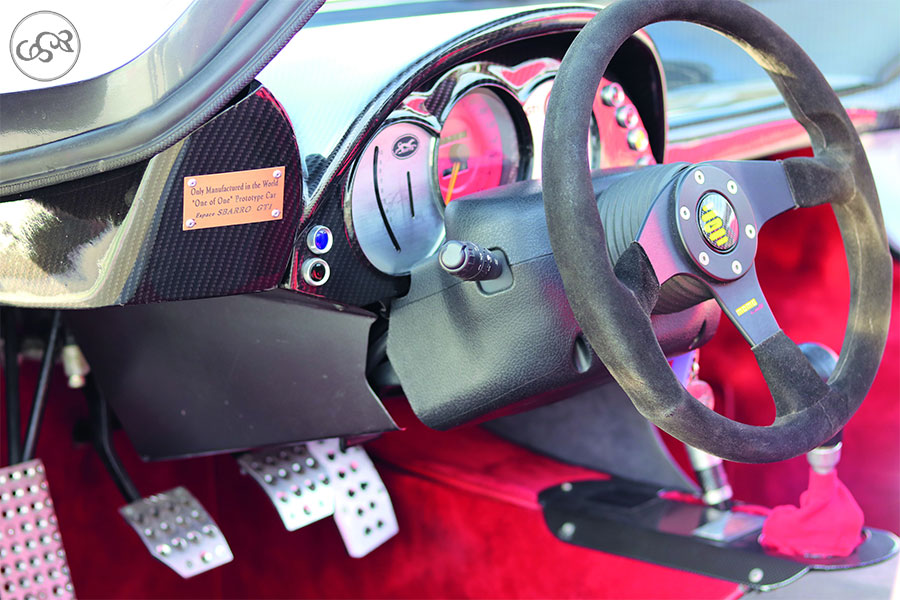
Spartan interior
The interior, though uncluttered, is warm and welcoming, with room for two. Access is via elytra doors, which add to the car's impressive character. The seats, covered in two-tone alcantara, are integrated into the body and are therefore fixed. That's why the aluminum pedals are electrically adjustable. The instrumentation, partly of Mercedes origin, includes a custom-made diode meter (fuel, oil pressure and rev counter).
To conclude, two figures: 4.9 seconds from 0 to 100 km/h and 325 km/h top speed. A car like this couldn't leave enthusiasts of exceptional automobiles indifferent. Sbarro got the message, and a year later presented the GT12, a 12-cylinder version.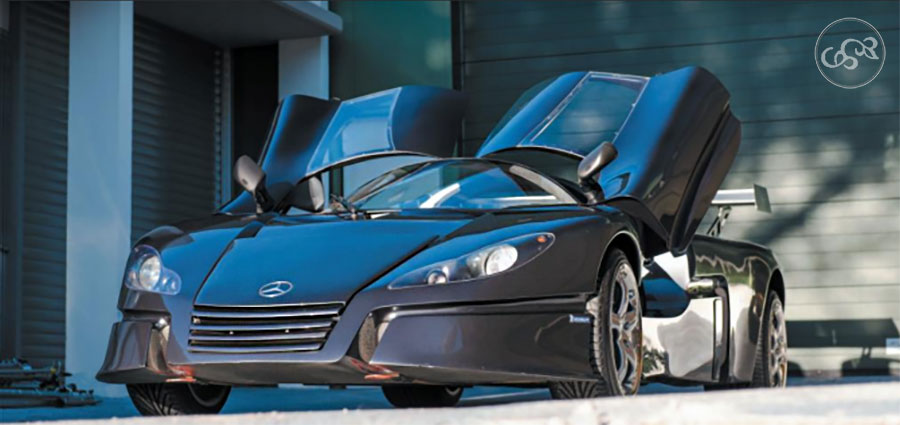

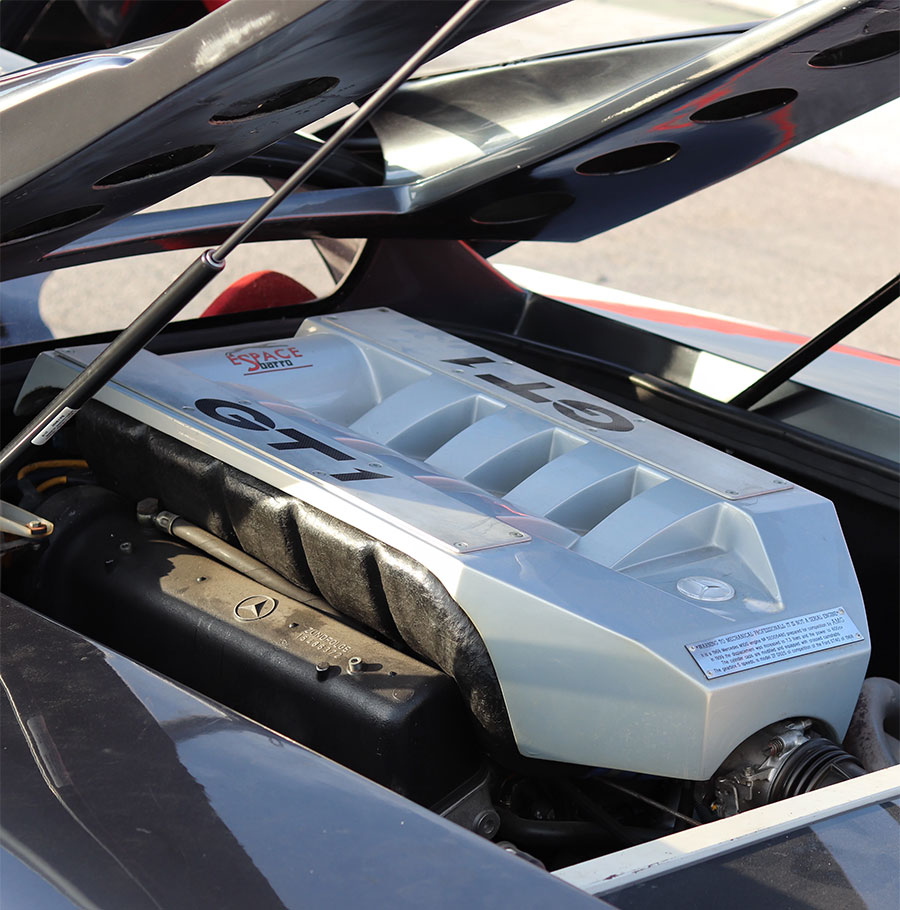
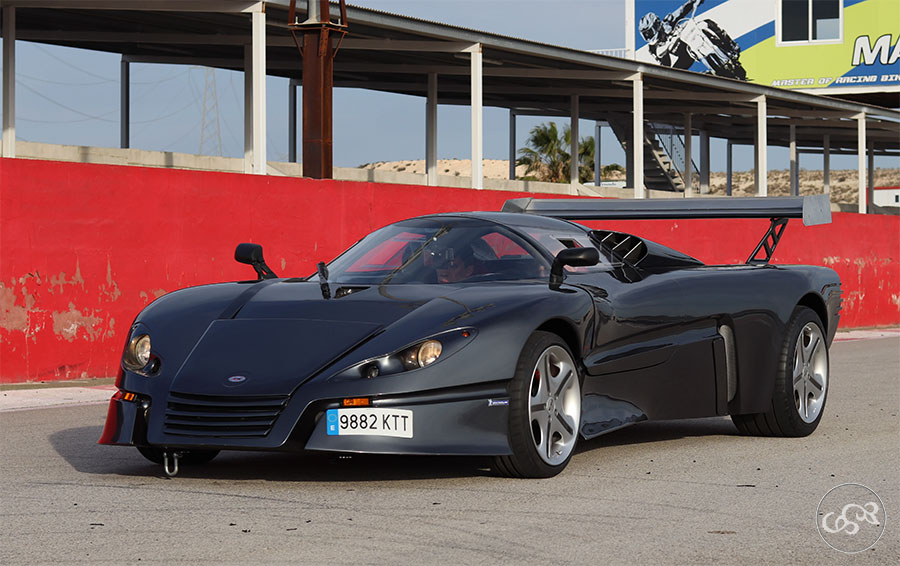
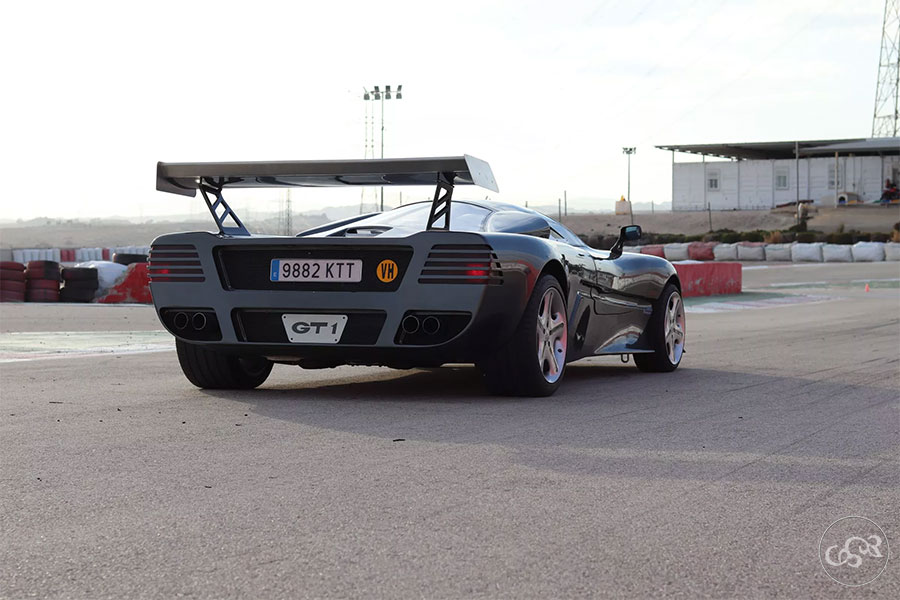
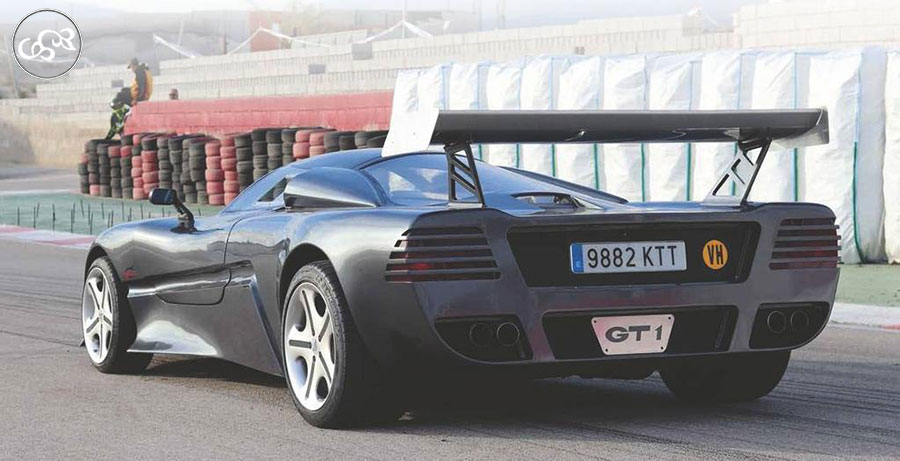

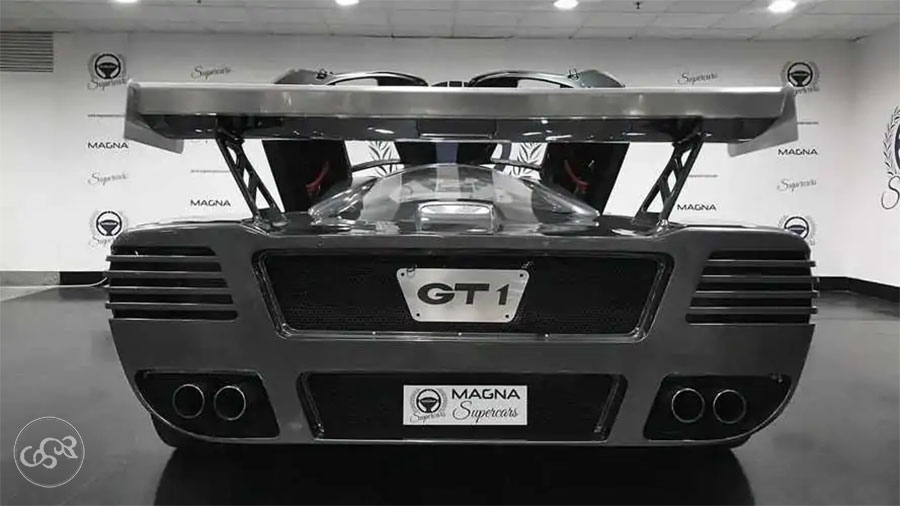

In brief
1- GT1 concludes the Ionos-Crisalys-GT1 trilogy
2- Tribute to Mercedes racing cars
3- Dual Frame chassis